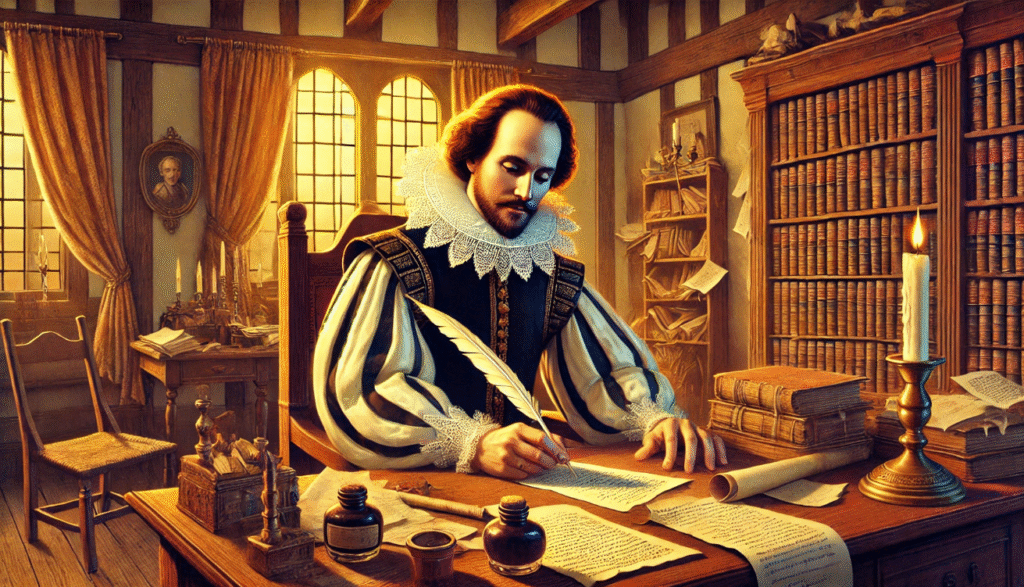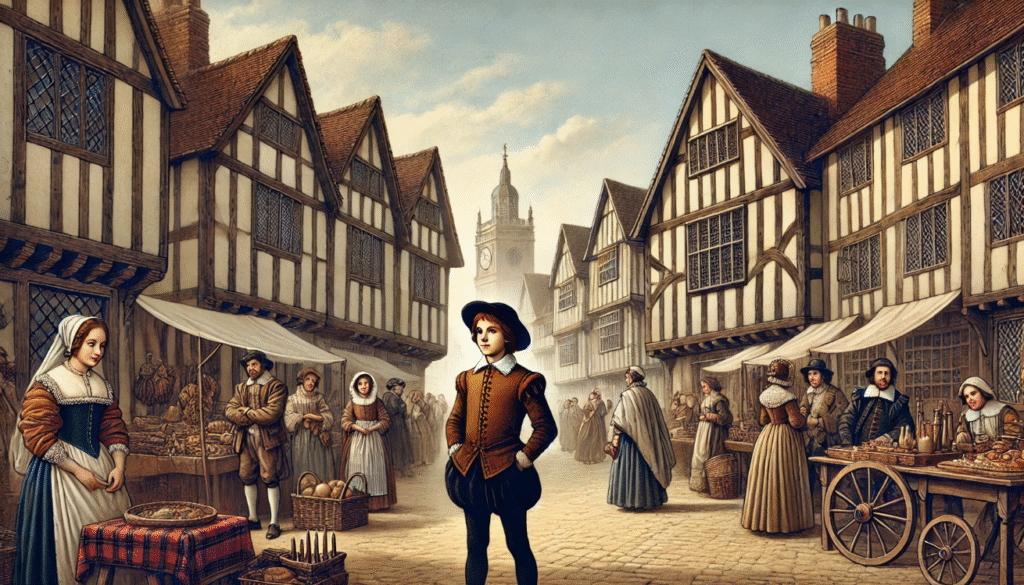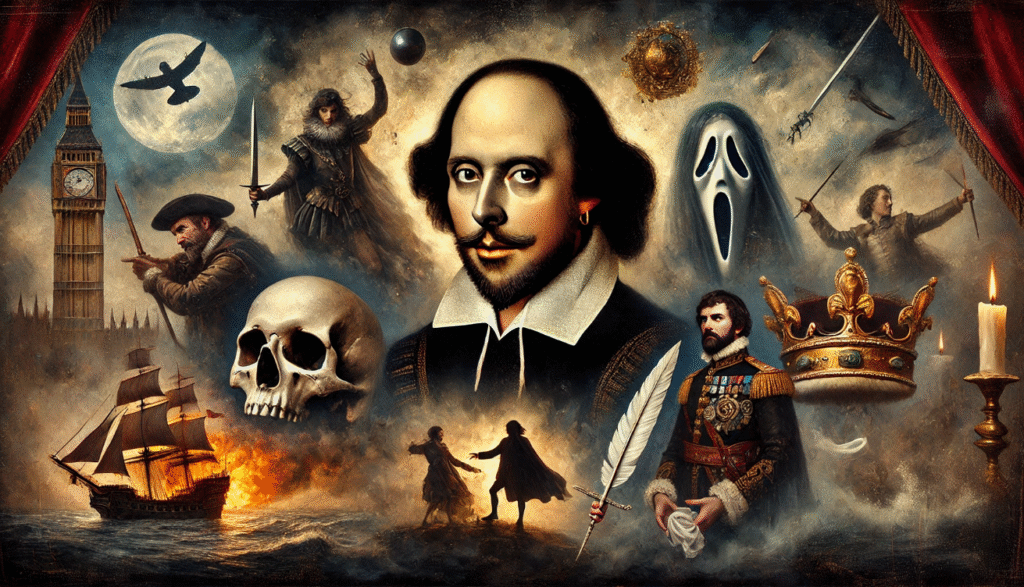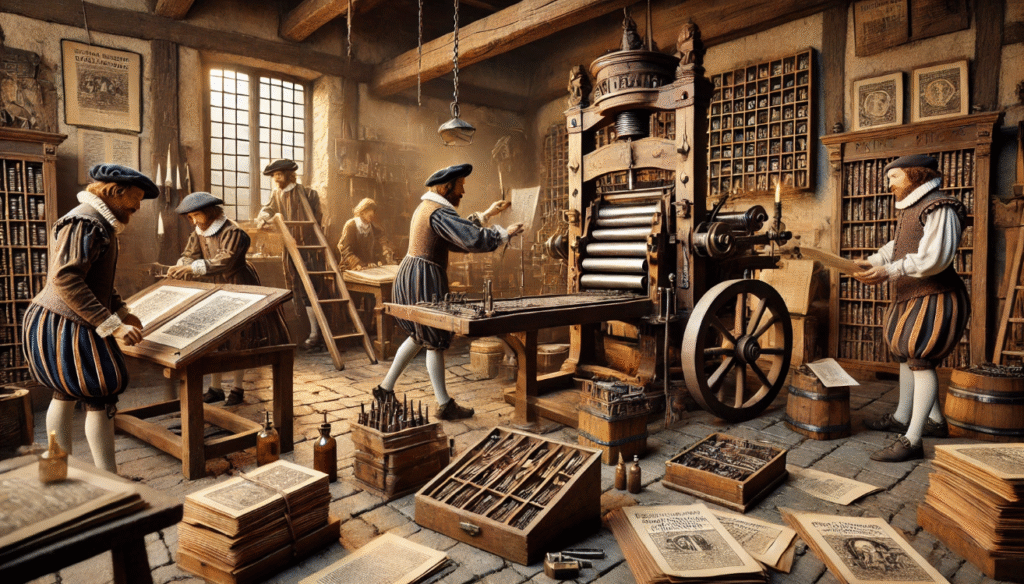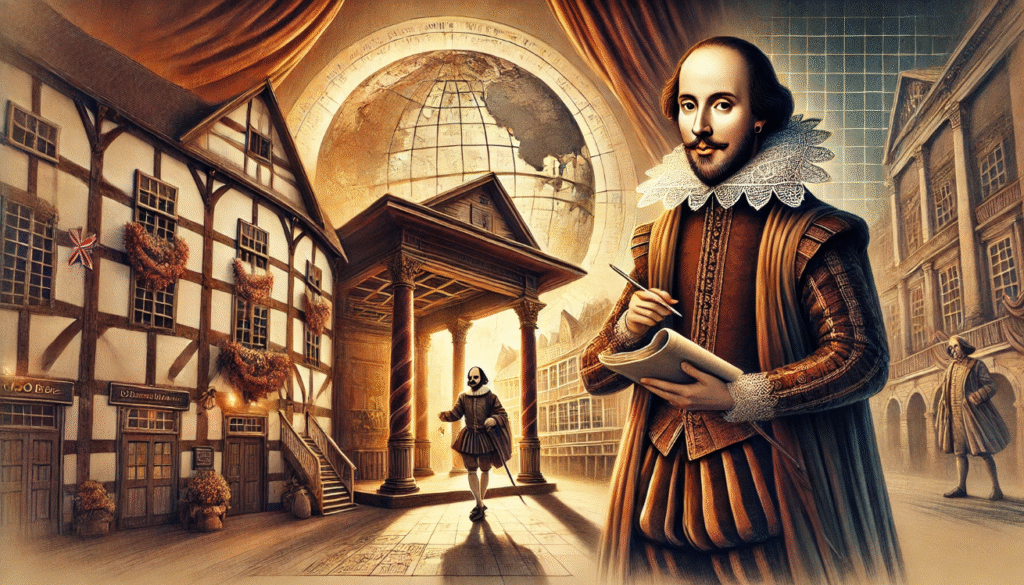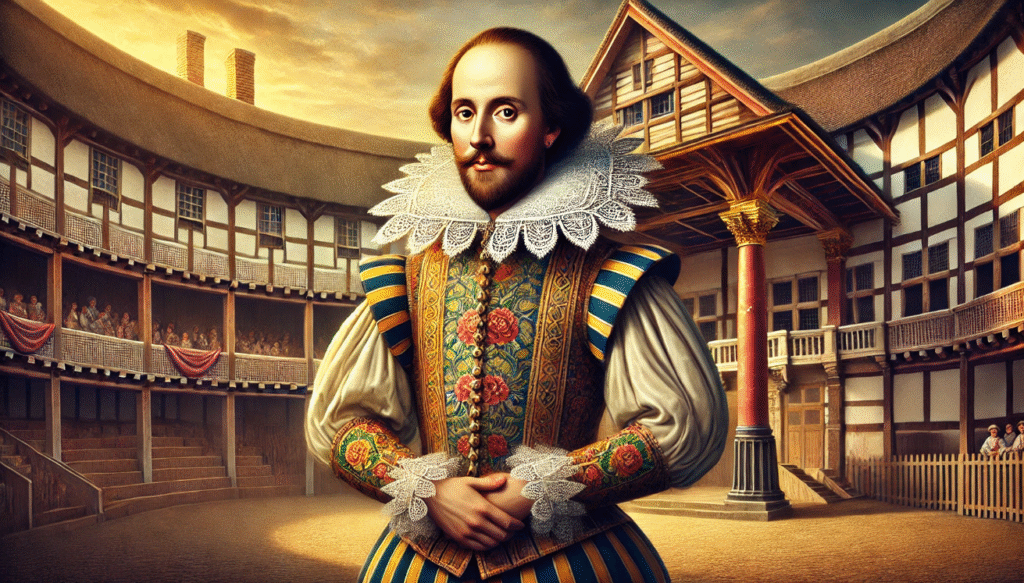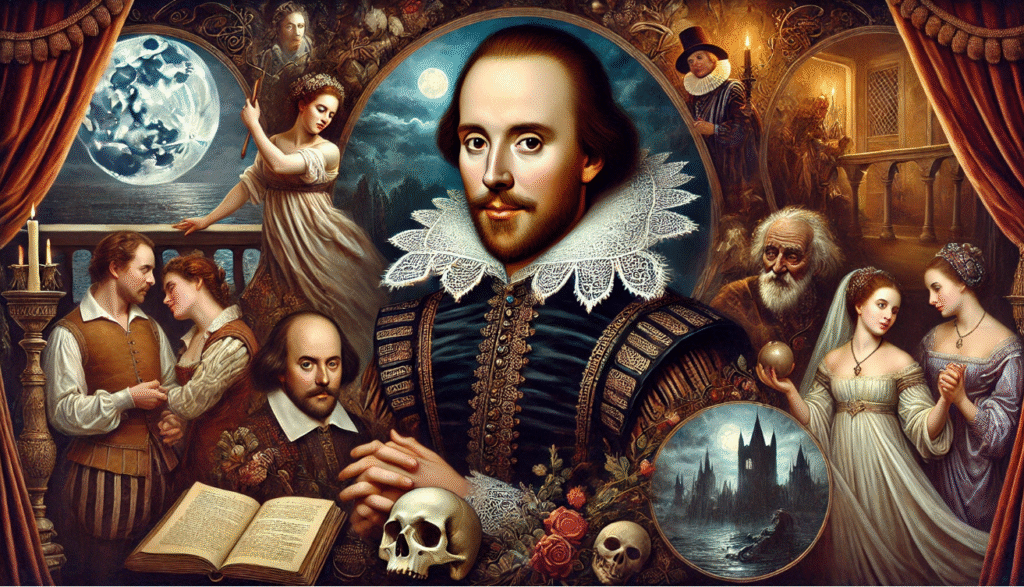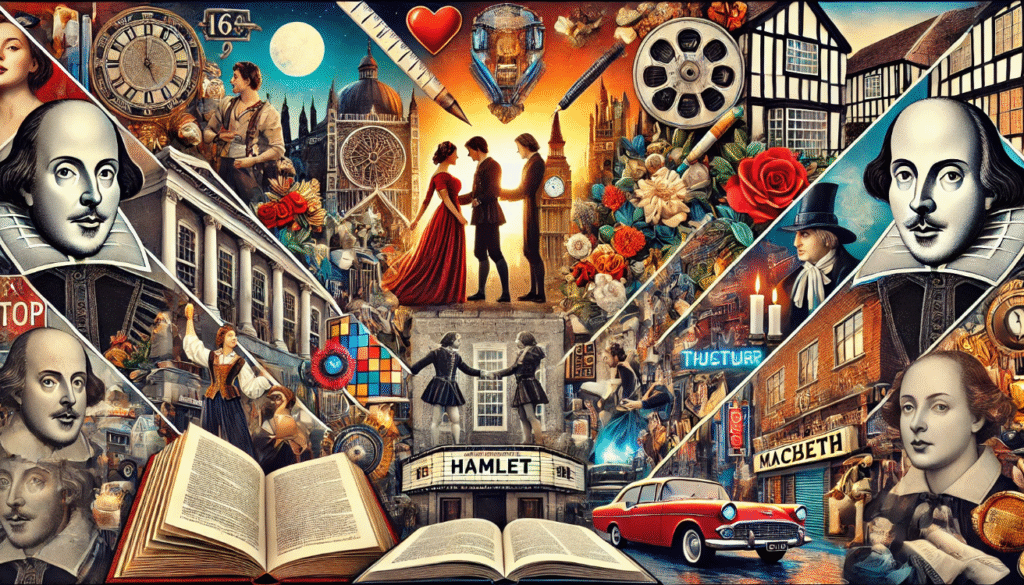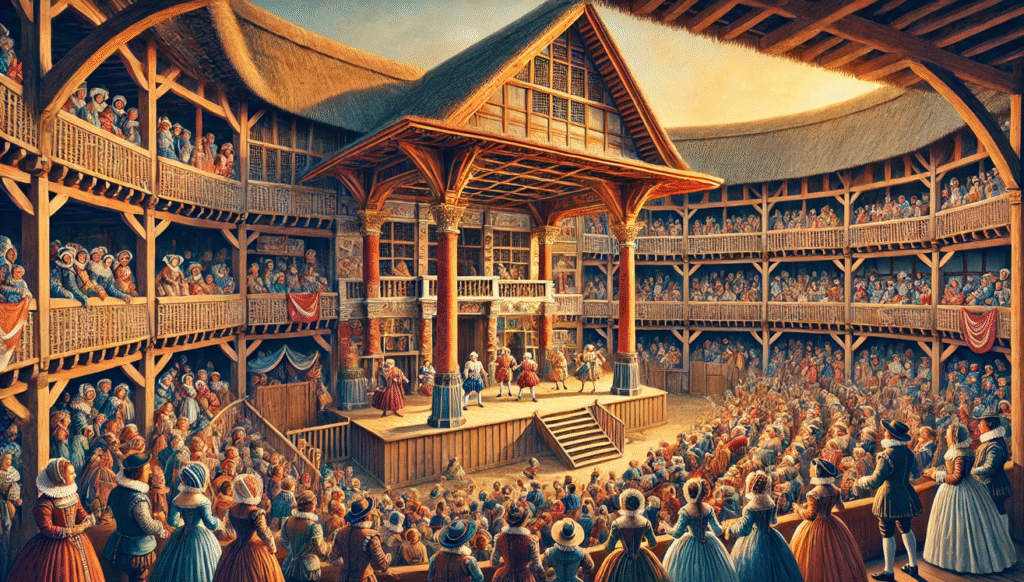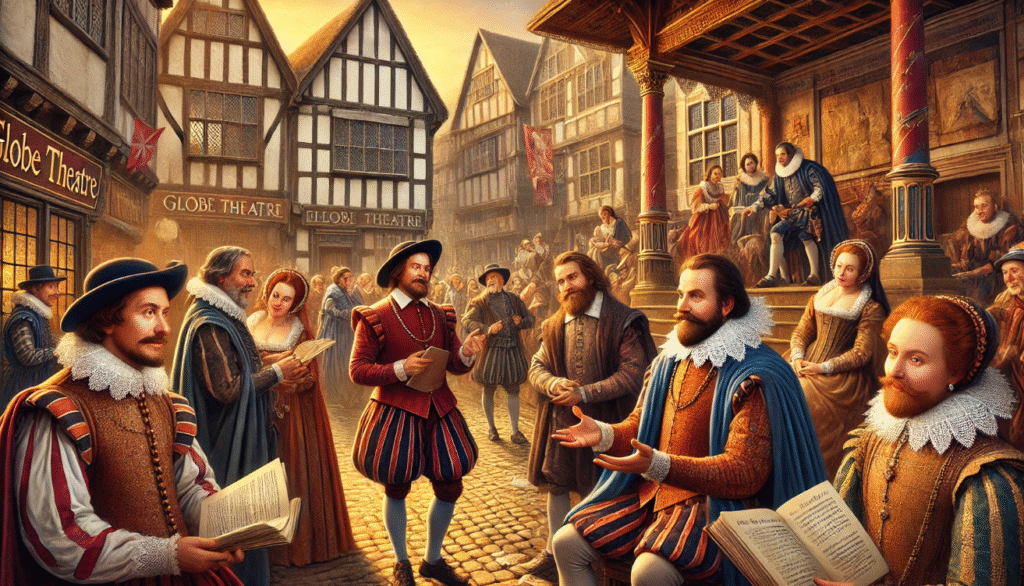 Historical interpretations of Shakespeare’s plays have endured for over 400 years, captivating audiences and scholars alike with their intricate characters and timeless themes. But what happens when we look at Shakespeare’s plays through the lens of historical interpretation? As society has evolved, so too have the ways in which we perceive and analyze his works. This article embarks on a journey through the shifting perspectives that have shaped our understanding of historical interpretations of Shakespeare’s plays from the Elizabethan era to the modern day. By uncovering these evolving interpretations, we can better appreciate the rich layers of meaning that continue to resonate across time. Just as an analysis of Daenerys Targaryen’s evolving costumes reflects her character’s transformation, the way Historical interpretations of Shakespeare’s plays are read and staged has adapted to mirror the ever-changing world around us. Let’s dive into historical interpretations of Shakespeare’s plays of how historical interpretations of Shakespeare’s plays have been interpreted—and reinterpreted—through the ages.
Historical interpretations of Shakespeare’s plays have endured for over 400 years, captivating audiences and scholars alike with their intricate characters and timeless themes. But what happens when we look at Shakespeare’s plays through the lens of historical interpretation? As society has evolved, so too have the ways in which we perceive and analyze his works. This article embarks on a journey through the shifting perspectives that have shaped our understanding of historical interpretations of Shakespeare’s plays from the Elizabethan era to the modern day. By uncovering these evolving interpretations, we can better appreciate the rich layers of meaning that continue to resonate across time. Just as an analysis of Daenerys Targaryen’s evolving costumes reflects her character’s transformation, the way Historical interpretations of Shakespeare’s plays are read and staged has adapted to mirror the ever-changing world around us. Let’s dive into historical interpretations of Shakespeare’s plays of how historical interpretations of Shakespeare’s plays have been interpreted—and reinterpreted—through the ages.
The Elizabethan and Jacobean Context

Shakespeare’s plays were created during the Elizabethan and Jacobean periods, a time when the social, political, and cultural landscape heavily influenced the way his works were perceived. Historical interpretations of Shakespeare’s plays two eras, named after the monarchs Queen Elizabeth I (1558–1603) and King James I (1603–1625), were marked by a strong belief in the divine right of kings, a rigid class system, and a flourishing of the arts. Shakespeare’s plays often mirrored the values, struggles, and complexities of this time.
During the Elizabethan period, audiences were highly attuned to the themes of power, morality, and fate. These themes were directly relevant to their everyday lives, where monarchs and political figures held significant influence over the people. Shakespeare’s characters, such as the tragic Hamlet or the ambitious Macbeth, reflected these societal concerns, offering audiences a mirror into their own world. His plays, often performed in open-air theaters like The Globe, were meant to both entertain and educate.
In the Jacobean period, following the accession of King James I, Shakespeare’s work began to reflect the new monarch’s interests. King James was deeply fascinated by witchcraft and the supernatural, which is evident in plays like Macbeth, where themes of fate, prophecy, and witches dominate. This shift in focus was not just about the royal court but also about the growing cultural significance of science, religion, and exploration.
The interpretations of Shakespeare’s works during these times were heavily shaped by the political and religious contexts. For instance, characters like Hamlet were seen as reflections of Elizabethan anxieties about the divine right of kings and the tensions between religious faith and human action. In contrast, Jacobean interpretations, such as the portrayal of Macbeth, focused on moral corruption and the consequences of unchecked ambition.
By understanding the historical context of Shakespeare’s plays during the Elizabethan and Jacobean periods, we gain insight into why his works resonated so deeply with early audiences and how they were interpreted in their time. This foundation allows us to explore how these interpretations evolved over the centuries, providing a richer understanding of the timeless nature of Shakespeare’s genius.
The 18th Century: Shakespeare as a National Icon

In the 18th century, Shakespeare underwent a significant transformation in how he was perceived and interpreted. No longer just a playwright, he became a symbol of national pride and cultural significance. This shift was largely driven by the growing romanticism of the period and the rise of literary criticism.
Shakespeare was increasingly seen as the quintessential English writer, and critics like Samuel Johnson began to elevate his works to a level of reverence. Johnson’s Shakespeare (1765) provided a comprehensive analysis of the playwright’s genius, praising his ability to capture the full range of human emotion and character. This period marked the beginning of Shakespeare’s transformation into a national icon, with the general public viewing him as a literary treasure and a symbol of England’s cultural superiority.
The 18th century also saw an increase in theatrical adaptations of Shakespeare’s works. Many of these productions were modified to appeal to contemporary tastes, often stripping away the darker, more complex elements of the original plays in favor of a more polished and accessible narrative. These alterations were in line with the period’s preference for neoclassical ideals, emphasizing clarity, morality, and order. For example, the tragic elements of King Lear or Othello were softened to make the plays more palatable to the more conservative tastes of the time.
Additionally, Shakespeare’s works became part of the broader cultural movement known as the “Shakespeare revival.” The nationalistic fervor of the era, coupled with a renewed interest in the arts, cemented Shakespeare’s status as a cultural hero. This period set the stage for the idea that his works held a timeless value that transcended the context of his original performances.
By the end of the 18th century, Shakespeare had firmly established himself not just as a playwright, but as a central figure in English cultural identity. His works were no longer just performed; they were revered as a key part of England’s literary legacy, and this national reverence laid the groundwork for future interpretations of his plays.
The 19th Century: The Rise of Shakespearean Scholarship

The 19th century marked a pivotal shift in how Shakespeare’s works were viewed, as the era saw the emergence of Shakespearean scholarship. This period was characterized by a deeper, more academic approach to analyzing and understanding his plays, moving beyond mere appreciation of their literary value to a focused study of their historical, cultural, and psychological aspects.
During this time, critics like A.C. Bradley and Edward Dowden helped establish Shakespeare as a subject of serious academic inquiry. Bradley’s Shakespearean Tragedy (1904) is one of the most influential works of the period, offering an in-depth analysis of the psychological complexity of Shakespeare’s tragic heroes, such as Hamlet and Macbeth. This approach emphasized the inner workings of Shakespeare’s characters and their moral dilemmas, which gave his plays a new layer of intellectual depth.
The 19th century also saw a growing interest in Shakespeare’s life and times. Scholars began to scrutinize his personal history, the political climate of Elizabethan England, and the social influences that shaped his writing. This period also marked the rise of the “historical criticism” approach, where critics sought to understand the playwright’s works in the context of his era, considering the sociopolitical environment, religious tensions, and class struggles.
The growing respect for Shakespeare as a literary figure during the 19th century led to his works being performed in a more “authentic” manner, with less interference from theatrical adaptations. Shakespeare was no longer just a playwright for popular entertainment; his works were viewed as masterpieces of human thought and emotion, worthy of detailed analysis and serious consideration.
By the end of the 19th century, Shakespeare had firmly established himself as the central figure in English literature, with academic institutions across the world beginning to treat his works as essential to the study of the humanities. The 19th century was crucial in shaping the modern understanding of Shakespeare, transforming him from a celebrated playwright to the subject of intense scholarly study and intellectual exploration.
The Early 20th Century: Modernism and Psychological Interpretations

The early 20th century brought about significant changes in how Shakespeare’s plays were interpreted, largely influenced by the rise of modernism and advancements in psychological theories. This era marked a shift from traditional literary criticism to more complex, psychological readings of Shakespeare’s characters and themes.
One of the most notable developments during this period was the influence of Freudian and Jungian psychology on literary analysis. Critics began to interpret Shakespeare’s characters as representations of unconscious desires, fears, and inner conflicts. Hamlet, for example, was no longer just a tragic prince; he became a symbol of psychological struggle, with his indecision and internal turmoil seen through the lens of Freudian theory. Hamlet’s famous soliloquy, “To be or not to be,” was analyzed not just as a philosophical question but as a reflection of the character’s deep-seated existential angst.
This psychological approach also extended to other Shakespearean characters, such as Lady Macbeth, whose ambition and guilt were analyzed in terms of psychological repression and subconscious desires. Scholars like G. Wilson Knight, who applied Jungian psychology to Shakespeare’s works, argued that the plays reveal the archetypes of the human psyche, showcasing universal themes of power, guilt, and redemption.
The modernist movement, with its focus on individual experience and fragmented narratives, also influenced Shakespearean scholarship. Critics started to look at his works as complex, multi-layered texts that could be interpreted in various ways depending on the reader’s perspective. This approach encouraged a more flexible reading of Shakespeare, allowing for a broader range of interpretations that aligned with the shifting cultural landscape of the early 20th century.
Modernist interpretations of Shakespeare helped to reframe his plays as not just historical or moral lessons, but as profound explorations of the human condition, engaging with issues such as identity, existential doubt, and the nature of reality. These psychological and modernist readings paved the way for the diverse and dynamic interpretations of Shakespeare that continue to emerge today, demonstrating the enduring relevance of his works across time and culture.
Mid-20th Century to 21st Century: Political and Post-Colonial Readings

From the mid-20th century to the present, Shakespeare’s works have been increasingly analyzed through political and post-colonial lenses, reflecting a growing focus on power dynamics, identity, and cultural conflict. These interpretations explore the ways in which Shakespeare’s plays engage with issues such as class, race, colonialism, and the politics of empire.
The mid-20th century saw the rise of political readings of Shakespeare, influenced by the social upheavals of the time. Critics began to examine how his works reflect and critique the structures of power and authority. Marxist critics, for example, analyzed plays like The Tempest and Julius Caesar to explore themes of class struggle, revolution, and the distribution of power. In these works, the relationships between rulers and subjects, or masters and slaves, were seen as a commentary on the class tensions of both Shakespeare’s time and the 20th century.
Post-colonial readings, which gained prominence in the latter half of the 20th century, have focused on how Shakespeare’s plays engage with colonialism and cultural imperialism. For instance, The Tempest, with its themes of colonization and the “othering” of Caliban, has been reinterpreted as a metaphor for European colonial domination. Scholars like Aimé Césaire have offered radical readings of the play, framing Caliban as a symbol of colonized peoples resisting oppression and reclaiming their agency.
In the 21st century, Shakespeare’s works continue to be interpreted in these political and post-colonial contexts, often highlighting the relevance of his themes in modern struggles for justice and equality. These readings challenge traditional, Eurocentric interpretations and offer new perspectives that resonate with contemporary issues of race, identity, and power. Productions of Shakespeare’s plays now often incorporate diverse, global perspectives, reimagining the characters and themes in ways that speak to today’s audiences.
Political and post-colonial interpretations have helped to expand the scope of Shakespeare’s relevance, demonstrating how his works continue to reflect the complexities of power, oppression, and resistance. These readings underscore the ongoing significance of Shakespeare’s plays in addressing global and local issues, proving that his works are not just historical artifacts, but living texts that continue to evolve with each new interpretation.
Shakespeare in Contemporary Adaptations

In recent decades, Shakespeare’s plays have undergone a resurgence in contemporary adaptations, reflecting their timeless themes and universal relevance. Today, filmmakers, playwrights, and directors regularly draw upon Shakespeare’s works, reimagining them for modern audiences while retaining the core emotional and philosophical elements. These adaptations make Shakespeare’s plays accessible to a new generation, offering fresh perspectives while preserving their original spirit.
One of the most significant trends in contemporary adaptations is the relocation of Shakespeare’s stories into different time periods and settings. For instance, Baz Luhrmann’s Romeo + Juliet (1996) transported the story of the star-crossed lovers into a modern, urban environment, keeping the original Shakespearean dialogue while reimagining the visuals and context. Similarly, Macbeth has been reinterpreted in various genres, from gangster films to war dramas, demonstrating how Shakespeare’s exploration of ambition, power, and guilt transcends historical boundaries.
Another popular approach is the reworking of Shakespeare’s plays to address current social issues. For example, The Taming of the Shrew has been adapted in numerous ways to reflect modern conversations about gender roles and relationships. These adaptations often update the language and settings but retain the original play’s core themes, making them resonate with contemporary audiences in a new light.
Shakespeare’s works are also increasingly adapted in diverse cultural contexts. International filmmakers and theater companies have reimagined his plays through the lens of different cultures, reflecting the global nature of his themes. For example, King Lear has been adapted into various languages and cultural settings, showing its universal exploration of aging, power, and family dynamics.
Contemporary adaptations of Shakespeare also extend to digital media, with web series, podcasts, and even video games drawing from his plays. These platforms provide innovative ways for younger audiences to engage with Shakespeare’s works, further demonstrating the adaptability of his themes across genres and mediums.
By staying relevant to modern sensibilities, contemporary adaptations of Shakespeare’s plays continue to showcase the power and universality of his work. These adaptations highlight how Shakespeare’s exploration of human nature, morality, and social dynamics is just as vital today as it was in the 16th century, ensuring that his plays remain a vital part of contemporary culture.

The historical interpretations of Shakespeare’s plays reveal a dynamic evolution of thought, reflecting the shifting cultural, social, and political landscapes across centuries. From the reverence of the Elizabethan and Jacobean periods to the nationalistic pride of the 18th century, and the scholarly depth of the 19th century, Shakespeare’s works have continually been reinterpreted to reflect the concerns and values of each era. The 20th and 21st centuries have introduced modern psychological, political, and post-colonial readings, further cementing Shakespeare’s relevance in addressing contemporary issues such as power, identity, and oppression.
What remains constant is Shakespeare’s ability to speak to universal human experiences. His works transcend time and space, providing endless opportunities for reinterpretation and adaptation. Whether through modern film, stage productions, or new academic lenses, Shakespeare’s plays continue to evolve, capturing the complexities of the human condition in ways that resonate with audiences today.
As we move forward, the continued exploration and reinterpretation of Shakespeare’s works offer a testament to their timelessness. They not only reflect the concerns of the past but also provide insight into our present and future. Shakespeare’s influence remains an enduring force in literature, theater, and cultural discourse, ensuring that his legacy will continue to shape how we understand ourselves and the world around us for generations to come.

